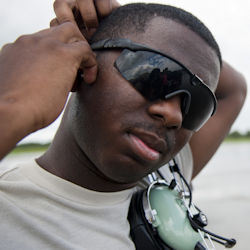Education and Training
The employer is required to provide training on the use and care of all hearing protectors to employees exposed to noise at or above an 8-hour time-weighted average of 85 decibels. Additionally, the employer must ensure that these employees actively participate in the training program.
Although the standard only requires "training," make sure your PPE training (or any safety training for that matter) includes "educating" the employee as to the importance of the correct use of their PPE.
It's important to understand that employees are most likely to use PPE when education explains why it's important for their safety. Understanding the importance of safety affects employee attitudes which, in turn, influences behaviors. The goal is to get employees to "want to" use their PPE correctly.
As mentioned earlier, safety education is composed of the following components: instruction, training, evaluation, and certification.
Instruction: The instructional component of hearing protection training includes information on:
- The effects of noise on hearing
- The purpose of hearing protectors
- The advantages, disadvantages
- Attenuation of various types
- An explanation of audiometric testing procedures
Training: The training component should be a hands-on practice session to make sure employees know how to properly use the PPE.
Evaluation: The evaluation component gives a supervisor or competent person the opportunity to assess the employee's ability to use the PPE in the work setting.
Certification: Once the supervisor or competent person verifies the employee has the needed knowledge, skill, and abilities to use the PPE, the employer should formally certify the employee as qualified.
Knowledge Check Choose the best answer for the question.
7-9. Employees who are not being supervised will most likely use their PPE when _____.
You forgot to answer the question!

